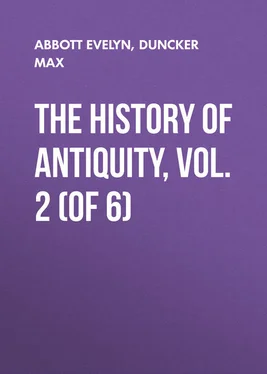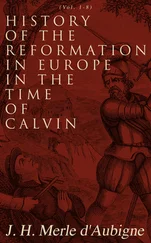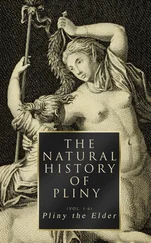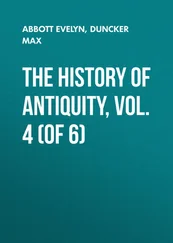Evelyn Abbott - The History of Antiquity, Vol. 2 (of 6)
Здесь есть возможность читать онлайн «Evelyn Abbott - The History of Antiquity, Vol. 2 (of 6)» — ознакомительный отрывок электронной книги совершенно бесплатно, а после прочтения отрывка купить полную версию. В некоторых случаях можно слушать аудио, скачать через торрент в формате fb2 и присутствует краткое содержание. Жанр: foreign_antique, foreign_prose, Историческая проза, на английском языке. Описание произведения, (предисловие) а так же отзывы посетителей доступны на портале библиотеки ЛибКат.
- Название:The History of Antiquity, Vol. 2 (of 6)
- Автор:
- Жанр:
- Год:неизвестен
- ISBN:нет данных
- Рейтинг книги:4 / 5. Голосов: 1
-
Избранное:Добавить в избранное
- Отзывы:
-
Ваша оценка:
- 80
- 1
- 2
- 3
- 4
- 5
The History of Antiquity, Vol. 2 (of 6): краткое содержание, описание и аннотация
Предлагаем к чтению аннотацию, описание, краткое содержание или предисловие (зависит от того, что написал сам автор книги «The History of Antiquity, Vol. 2 (of 6)»). Если вы не нашли необходимую информацию о книге — напишите в комментариях, мы постараемся отыскать её.
The History of Antiquity, Vol. 2 (of 6) — читать онлайн ознакомительный отрывок
Ниже представлен текст книги, разбитый по страницам. Система сохранения места последней прочитанной страницы, позволяет с удобством читать онлайн бесплатно книгу «The History of Antiquity, Vol. 2 (of 6)», без необходимости каждый раз заново искать на чём Вы остановились. Поставьте закладку, и сможете в любой момент перейти на страницу, на которой закончили чтение.
Интервал:
Закладка:
What we can gather from Grecian legend is confirmed by some statements of historians and by traces which tell of settlements of the Phenicians. Thucydides informs us that the Phenicians colonised most of the islands of the Ægean. 94 94 Thac. 1, 8.
Diodorus has already told us with regard to Rhodes that in the temples of this island were Phenician works of art and inscriptions, and that in Rhodes the sun-god and the seven children which he begot there were worshipped. In the number eight made by these deities we can hardly fail to recognise the eight great deities of the Phenicians; the sun-god at their head is the Baal of the Phenicians (I. 357). And if Diodorus mentions Makar among the seven sons of the sun-god of Rhodes, – if according to others Rhodes, like Cyprus, was called Macaria, – Makar is a Greek form of the name Melkarth. We further learn that on the highest mountain summit in Rhodes, on Atabyris, Zeus was worshipped under the form of a bull, and that a human sacrifice was offered yearly to Cronos. In Atabyris we cannot fail to recognise the Semitic Tabor, i. e. the height. We found above that the Phenicians worshipped Baal under the form of a bull, and the Greeks are wont to denote Baal Moloch by the name of Cronos. 95 95 Vol. i. 363, 364.
These forms of worship continued to exist even when at a later time Hellenic immigrants had got the upper hand in Rhodes. It was the Dorians who here met with resistance from the Phenicians at Camirus and Ialysus; they got the upper hand, but admitted Phenician families into their midst, 96 96 Athenæus, p. 360.
and continued their sacred rites. Diodorus informs us that the Phenicians whom Cadmus had left behind on Rhodes had formed a mixed community with the Ialysians, and that it was said that priests of their families had performed the sacred duties. 97 97 Diod. 5, 58.
Even at a later time Rhodes stood in close relation with Phœnicia, especially with the city of Aradus. 98 98 Bœckh. C. I. G. 2526.
Thus it happened that the colonies which the Rhodians planted in the seventh and sixth centuries in Sicily, Gela and Acragas, carried thither the worship of Zeus Atarbyrius. Zeus Atarbyrius was the protecting deity of Acragas, and human sacrifices were offered to his iron bull-image on the citadel of that city as late as the middle of the sixth century. The coins of Gela also exhibit a bull. 99 99 Hefter, "Götterdienste auf Rhodos," 3, 18; Welcker, "Mythologie," 1, 145; Brandis, "Munzwesen," s. 587.
Of the island of Thera, Herodotus told us that the Phenicians colonised it and inhabited it for eight generations, i. e. for more than 250 years according to his computation. Herodotus names the chief of the Phenicians whom Cadmus left behind on Thera; others speak of the two altars which he erected there. 100 100 Schol. Pind. "Pyth." 4, 88; Pausan. 3, 1, 7, 8; Steph. Byz. Μεμβλίαρος.
The descendants of these Phenicians were found here by the Greek settlers from Laconia. It is certain that even in the third century B.C. the island worshipped the hero Phœnix. 101 101 Bœckh. C. I. G. 2448.
Of the island of Melos we learn that it was occupied by Phenicians of Byblus, and named by them after their mother city; 102 102 Herod. 4, 147; Steph. Byz. Μῆλος.
the island of Oliaros near Paros was, on the other hand, according to Heraclëides Ponticus, occupied by the Sidonians. 103 103 Steph. Byz. Ὠλίαρος.
Strabo informs us that Samothrace was previously called Melite (Malta); from its height (the island is a mountain rising high in the sea and covered with oak forests; the summit reaches 5000 feet) it obtained the name of Samos, "for high places are called Sami;" 104 104 Strabo, pp. 346, 457, 472; Diod. 5, 47.
as a matter of fact the stem of the word of this meaning, like the name Melite, belongs to the Phenician language. Ephorus has already told us (p. 56) that the Samothracians sought for Harmonia at their festivals; Diodorus represents Cadmus as celebrating the marriage with Harmonia on Samothrace as well as at Thebes, and we learn from Herodotus that the Cabiri, i. e. the great gods of the Phenicians, were worshipped on Samothrace; votive tablets of the island dating from Roman times still bear the inscription, "to the great gods," i. e. to the Cabiri. 105 105 Vol. i. 378; Herod. 2, 51; Conze, "Inseln des Thrakischen Meeres," e. g. s. 91.
The islands of Imbros and Lemnos also worshipped the Cabiri; Lemnos especially worshipped Hephæstus, who had a leading place in this circle. 106 106 Strabo, p. 473; Steph. Byz. Ἴμβρος; vol. i. 378.
The island of Thasos is said, according to the statement of the Greeks, to have been called after a son of Phœnix, or Agenor, of the name of Thasos, who was consequently a brother of Cadmus. Herodotus saw on the island a temple which the Phenicians had built to Heracles, i. e. to Baal-Melkarth, and the mines which they had made on the coast opposite Samothrace; "they had overturned a great mountain in order to get gold from it." 107 107 Herod. 2, 44; 6, 47.
Herodotus also tells us that the temple of Aphrodite Urania on the island of Cythera off the coast of Laconia was founded by the Phenicians, and Pausanias calls this temple the oldest and most sacred temple of Urania among the Hellenes; the wooden image in this temple exhibited the goddess in armour. Aphrodite Urania is with the Greeks the Syrian Aphrodite; if she was represented on Cythera in armour it is clear that she was worshipped there by the Phenicians as Astarte-Ashera, i. e. as the goddess of war and love. 108 108 Herod. 1, 105; Pausan. 1, 14, 7; 3, 23, 1.
Not in the islands only, but on the coasts of Hellas also, the Phenicians have left traces of their ancient occupation, especially in the form of worship belonging to them. On the isthmus of Corinth Melicertes, i. e. Melkarth, was worshipped as a deity protecting navigation; Corinthian coins exhibit him on a dolphin. 109 109 Pausan. 10, 11, 5; Bœckh, "Metrologie," s. 45.
Aphrodite, whose shrine stood on the summit of Acrocorinthus, was worshipped by prostitution like the Ashera-Bilit of the Phenicians. In Attica also, in the deme of Athmonon, there was a shrine of the goddess of Cythera, which king Porphyrion, i. e. the purple man, the Phenician, is said to have founded there at a very ancient time "before king Actaeus." 110 110 Pausan. 1, 2, 5; 1, 14, 6, 7.
At Marathon, where Heracles was worshipped, and of whom the name represents the Phenician city Marathus, rose a fountain which had the name Makaria, i. e. Makar, 111 111 Strabo, p. 377; Pausan. 1, 32, 5.
the name of Melkarth, which we have already met with in Cyprus and Rhodes, and shall meet with again. More plainly still do the tombs lately discovered in Hymettus at the village of Spata attest the ancient settlement of the Phenicians on the Attic coast. These are chambers dug deeply into the rock after the Phenician manner, with horizontal roofs after the oldest fashion of Phenician graves; and shafts lead down to them from the surface. The ornaments and works in glass, ivory, gold and brass discovered here, which are made after Babylonian and Egyptian models, can only have been brought by the Phenicians. 112 112 ΑΘΗΝΑΙΟΝ ς´ γ´, 1877, and below, chap. xi.
The citadel of Thebes, as has been said, retains the name of Cadmus; the poetry of the Greeks praised the mighty walls, the seven gates of Thebes. We know the number seven of the great Phenician gods; we can prove that the seven gates were dedicated to the gods of the sun, the moon and the five planets; 113 113 Brandis, "Hermes," 2, 275 ff. I cannot agree in all points with the deductions of this extremely acute inquiry.
and the Greeks have already admitted to us that they received the wearing of armour, the art of mining and masonry and finally their alphabet from Cadmus, i. e. from the Phenicians, the Cadmeans of Thebes.
Интервал:
Закладка:
Похожие книги на «The History of Antiquity, Vol. 2 (of 6)»
Представляем Вашему вниманию похожие книги на «The History of Antiquity, Vol. 2 (of 6)» списком для выбора. Мы отобрали схожую по названию и смыслу литературу в надежде предоставить читателям больше вариантов отыскать новые, интересные, ещё непрочитанные произведения.
Обсуждение, отзывы о книге «The History of Antiquity, Vol. 2 (of 6)» и просто собственные мнения читателей. Оставьте ваши комментарии, напишите, что Вы думаете о произведении, его смысле или главных героях. Укажите что конкретно понравилось, а что нет, и почему Вы так считаете.












